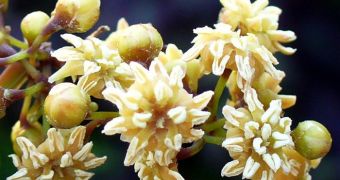Researchers have begun taking a keen interest lately in a species of plant that is believed to be the oldest blooming flower in the world. Its origins can be traced directly to the earliest flowers that appeared on Earth, some 130 million years ago.
The most ancient flowering plant still alive today is called Amborella trichopoda, and it can only be found on the remote south Pacific island of New Caledonia. Horticulture never had an interest in this rather uninteresting flower, so it is not commonly grown.
The Botanic Garden at the University of Bristol is one of the few places in the world where the planet was successfully grown, from seeds harvested on the island back in 2007.
According to UB professor Simon Hiscock, the director of the Garden, studying the small plant may hold the key to unraveling one of the last remaining mysteries of evolution, and namely what the origin of flowering plants is.
These organisms are called angiosperms, and they can be traced back through the fossil record until about 130 million years. Currently-accepted scientific studies say that this is when the plants suddenly appeared. How this happened is still opened to debate.
Even Charles Darwin, the author of the On the Origins of Species, was puzzled by this, and could not find an explanation for it. DNA analysis conducted some 11 years ago showed that A. trichopoda can be directly traced to the earliest angiosperms that ever lived.
The research also implies that these were the first flowering plants in the world and not Magnolias, as was previously determined. Experts have been trying to grow the plants ever since these discoveries were first made.
But not all groups were successful. The UB Botanic Garden is the only one in the UK that successfully grew the seeds. Professor Hiscock collected them together with French botanists from the University of Lyon directly from their native island.
One of the things that is unique to angiosperms is their reproductive mechanism, which is based on pollen-pistil interactions. Both male and female reproductive organs are placed on the same flower.
This allows these plants to reproduce even if pollinators such as bees are absent. Additionally, the setup provides increased overall chances of successful reproduction. But the trait is not present in Amborella.
Researchers determined that male (pollen-producing) and female (containing seed-bearing carpels) organs are placed in separate flowers. This is even more weird when considering that Amborella's ancestors also had their reproductive organs on the same flower.
Studying the plant could yield more insight into the evolutionary history of self-fertilization, and may eventually lead to a better understanding of how flowers appeared.

 14 DAY TRIAL //
14 DAY TRIAL //